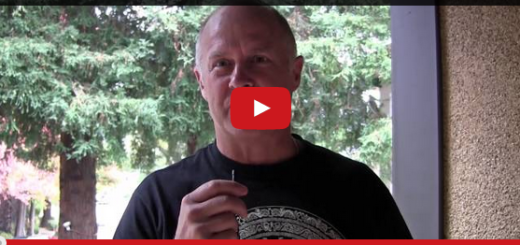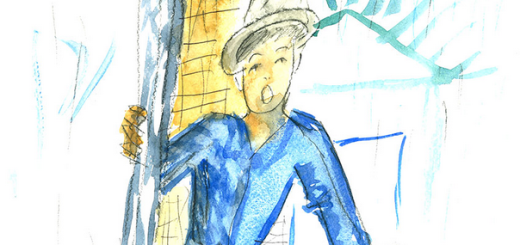Gov Brown Signs CA Budget – What does this mean for Alzheimer’s services?
Have you noticed that so many times during the day, something makes you think of Alzheimer’s? It happens to me, too, and three occasions immediately come to mind.
Driving a few days ago and listening to the radio, NPR alerted me to a story I wanted to hear. With only a few minutes to my destination, I hurried home, raced up the stairs and tuned in before even saying hello to everyone. My house was a madhouse so I couldn’t focus as intently as I wanted, but the story was about innovative research on families in Colombia beset with early onset Alzheimer’s. This research is risky as the subjects will be completely healthy individuals, rather than those already with dementia symptoms, and at least one of the studies has been done only on animals. Potential human side effects are unknown and it can be a frightening situation. Yet, you know as well as I do that desperate families often have the courage to try anything. We thank them for saying “Yes, I want to participate.” This same story was highlighted in a series by the New York Times a year ago; it’s taken all this time to obtain the necessary research funding and sign up participants. We’ll definitely keep an eye on this exciting study.
The second thing that made me think about Alzheimer’s was hearing another radio commentary while driving (and no, I’m not really in the car all the time!). This time, a gerontologist gave an upbeat talk about the well-being and health of many of his elderly patients. His belief is that the chance of getting a disease actually lessens with age; this was a pretty interesting hypothesis, but it was disappointing that he omitted any discussion of Alzheimer’s and the fact that increasing age is a potent risk factor. He seemed to be saying that if you’re healthy at age 80, you have a good chance of being healthy at 85 or 90, but we know that a clear memory and substantial cognitive ability at age 80 does not necessarily translate into the same situation five years down the road. To me, this was a real missed opportunity to educate his listeners.
I bring up these things because (as I’ve said before), Alzheimer’s-related topics are everywhere. These stories also point to two major objectives for Alzheimer’s advocates – research and public awareness. By linking what we read and hear, we can connect the dots and find a way to keep the story alive.
The third thing that made me think of Alzheimer’s refers to the devastating situation for Adult Day Health Care (ADHC) Centers. You know that California’s budget eliminates ADHC, thereby clearing $169 Million off the books. At the same time, the Senate and Assembly approved AB96, a new smaller program funded at $85 Million, called KAFI (Keeping Adults Free From Institutions). A watchful eye has been kept on the Governor to see what his action would be and here’s what happened.
Just yesterday, Governor Brown signed the fiscal year 2011-12 budget. Although the very good news is that the budget retains the $85 million in state funding approved by the budget conference committee in March, the Governor deleted the budget language that directed the use of the funds. What this means is that the General Fund augmentation is sustained, to be used by the Department of Health Care Services to transition current ADHC beneficiaries to other appropriate services. Although this may include seeking federal waiver services and developing alternative funding arrangements to preserve services at existing centers, the Governor insists that the provision of any additional ongoing services after the transition must consider other existing home and community based services, and that the state take a coordinated and integrated approach to providing services that reduce Medi-Cal beneficiaries’ risk of institutionalization. Based on this, it is felt that the Governor is probably not inclined to sign AB 96 (KAFI). So, now, we’re faced with uncertainty regarding conversion to a waiver, making the need for legislation authorizing a waiver (AB96) even more urgent.
In the meantime, we know that so many of you called and wrote to the Legislature and the Governor advocating for ADHC funding and it’s clear your voice was heard. Thank you! But, there’s much more to be done. Stay tuned.


















A large percentage of participants in ADHC’s have no medical issues. It has been used has a social club will free meals and entertainment. For the hard working tax payers not eligible for MediCal, we have to pay to receive these services.
Shame on You for not allowing all seniors to use these service for FREE.
Due to the total abuse of these services, the Governor is right in not funding these facilities and transferring patients who truly need help to other programs.
I am an RN, BSN and continue to pray for all the ADHC’s to continue to thrive in the state of California. I continue to believe that eventually 50% of the population of elderly and disabled will die without these needed services. There are waiting lists and no beds in nursing homes! I also work in home care which was hit by deductions. I wrote Governor Brown to just spend the money on remodeling Agnews as the state nursing home.
My best qualities are with dementia and Alzheimer’s elderly.
Prayers
Mary Voitek RN, BSN, PHN
Fred, I’m not sure you are aware that California has two models of adult day services. “Adult Day Health Care” is the medical model. Centers are licensed by the CA Dept of Public Health as health facilities and it is the state, not ADHC providers, who determine Medi-Cal eligibility. The state also determines which Medi-Cal eligible persons meet the strict criteria to receive ADHC services, not the ADHC center. The other model is “Adult Day Program,” which is licensed by the Department of Social Services. As a non-medical model it is not reimbursed by Medi-Cal. Persons attending are most often private pay.
Mr.Sampson – I don’t know where you got the notion that ADHC patients don’t have medical issues. That’s the whole point of ADHC – it’s Adult Day HEALTH Care – they must have at least 2 chronic medical issues that need to be followed by skilled nursing. That’s the bottom line. Most have more than two chronic medical issues. In addition they follow a plan by a physical therapist and/or an occupational therapist to at least maintain their current mobility and strength to be able to do their activities of daily living as best they can (many get help at home with the IHSS program), plus social workers who connect them to community resources and offer counseling services and finally an Activity Coordinator. ADHC is NOT Adult Day – that is private pay and quite different- they don’t necessarily have medical conditions that compromise their safety as they try to continue to live independently in their communities. ADHC programs were “invented” to help the state save money by keeping medically fragile people out of ERs, hospitals, skilled nursing facilities, and other more intensive (expensive) institutions.
I just reviewed a novel about a faimly living with dementia by Katie Gates It is called the Somebody Who very lovely story Your words are so lovely and so timely Thank you for sharing. It speaks volumes